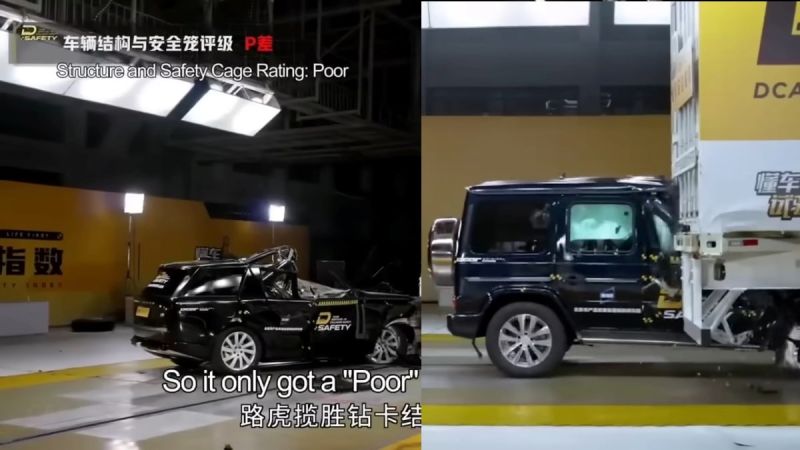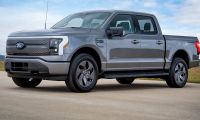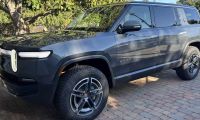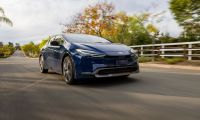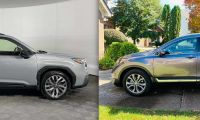Crash testing is the most crucial part in determining a vehicle's safety level. The cars are being crashed in various ways to simulate unwanted scenarios, and determine which areas need to be improved. One of the most extreme crash tests simulates a vehicle crashing in the rear of a semi-truck's dorse. Over the years, dorse guards have been improved to the point where a car crashing with the entirety of its front will not cause it to crumple thus going underneath the trailer.
However, safety institutions have devised an even more extreme crash test.
The latest variation of this test involves a vehicle crashing into the dorse guard with only 30 percent of its frontal area. This puts immense stress on the weakest parts of the guard – the edges. The results reveal some surprising and not-so-surprising details.
The most expensive vehicle isn't necessarily the safest.
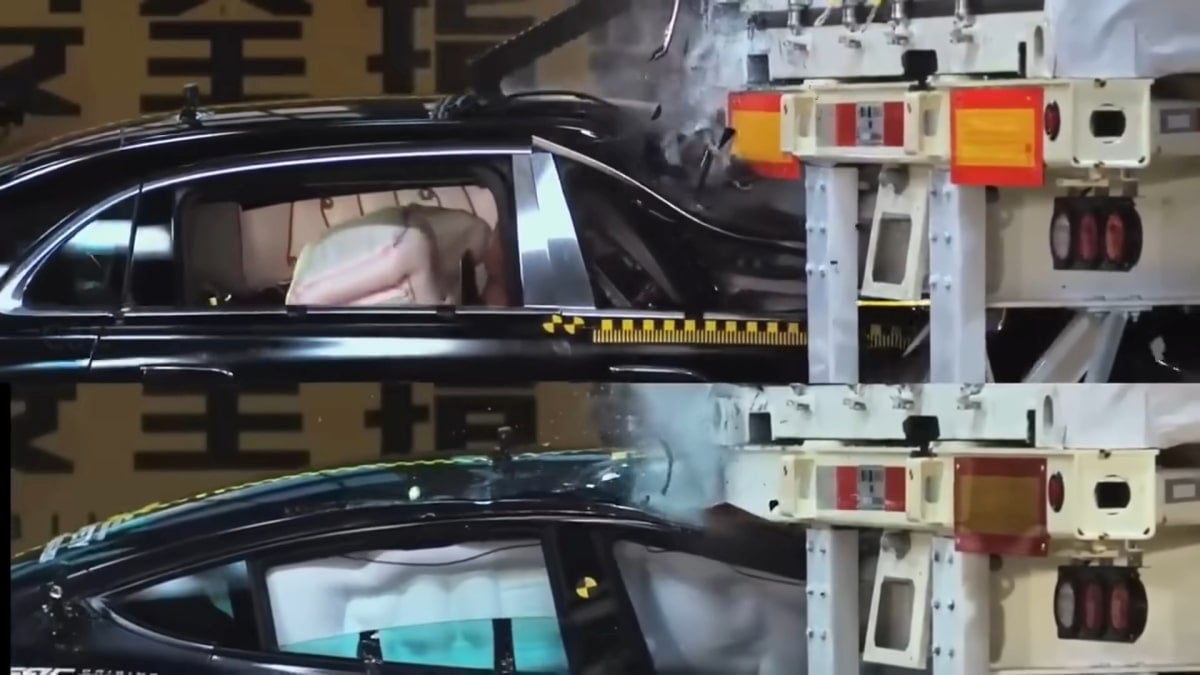
The Chinese D-Car Institute of Collision Safety recently carried over several crash tests on SUVs, sedans, and compact models, the majority of which sold on the US market. These include the new Range Rover Vogue, Mercedes G-Wagon, Tesla Model 3, Toyota RAV4, Hyundai Elantra, Lexus ES, and a few Chinese models that are popular on their home market.
To a big surprise, the most expensive SUV – the 2025 Range Rover – showed the worst results, as its roof deformed to an extent where the rear of the roof crumpled inwards, causing serious injuries to the rear-seat passenger. Needless to say, the front passenger is not walking away in this case. The least-surprising results are from the boxy G-Wagon, which showed the best results of all the large SUVs.
Its front pillar, while torn off, absorbed a good amount of the impact, perfectly preserving the rear passenger section. The front and side airbags deployed as soon as the front of the SUV hit the dorse guard. In this case, the front passenger can walk away without fatal injuries. The Mercedes GLS and BMW X7 showed worse results, but not as bad as the Range Rover.
The compact SUVs showed worse results. Both the Toyota RAV4, Honda CR-V, and Nissan Quashquai (Rogue in the US) saw strong deformation in the B-pillar, causing severe intrusion. While the RAV4 showed less deformation in the B-pillar, even the driver has a high probability of sustaining fatal injuries in all three SUVs. The Chinese BYD Song EV showed similar results to the RAV4. Perhaps when the all-new 2026 Toyota RAV4 comes out, it would feature improved safety.
Here's the interesting part.
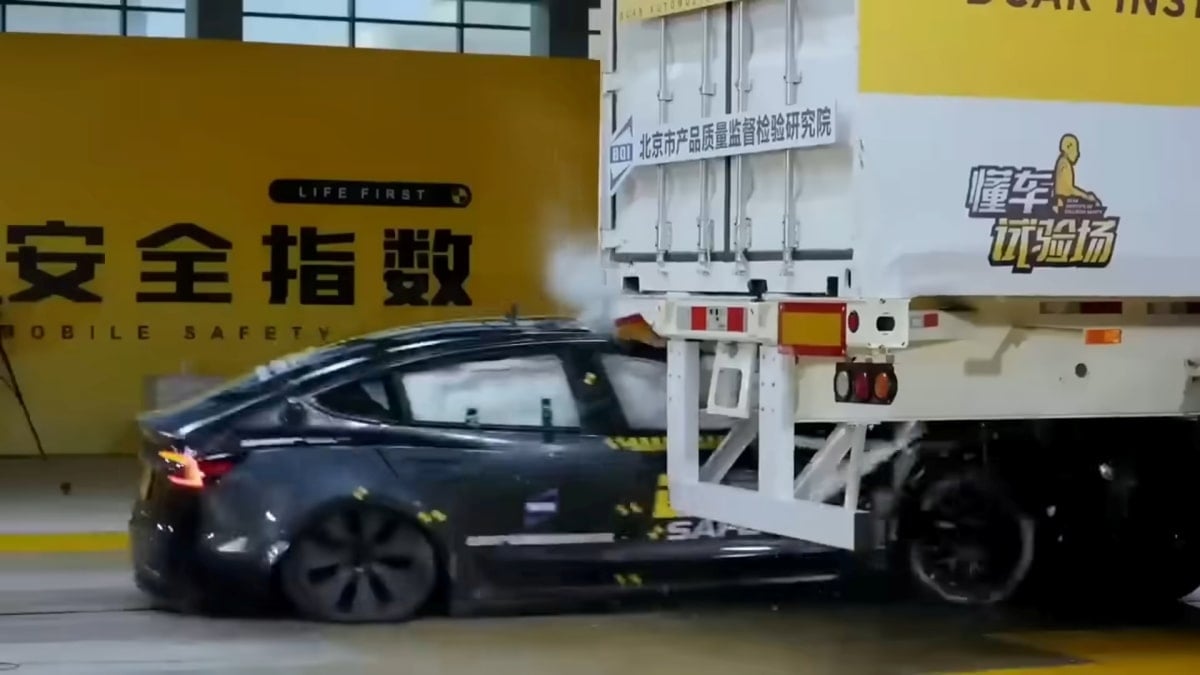
The sedans models proved to be safer. While I don't inherently hate SUVs, I always knock on their higher statue and how they are more prone to rollovers. Many performance SUVs, on the other hand, need to sacrifice ride comfort for improved stability, for that same reason. There are a few out there that get it right, but recently a disgruntled owner of an American hybrid SUV switched to a Toyota model, and that was just one of the reasons.
As for the sedans, Mercedes Maybach and Volvo were the expected winners. The reality, however, is different. The ultra-luxurious German model performed the worse as the A-pillar caved in. Moreover, the side-curtain airbag did not deploy to soften the front passenger's impact. It is worth noting that the Maybach tips the scales at 4,883 pounds, so this may be playing against it. The lightest sedan did surprisingly well (more on that in a bit).
The Volvo S60 sees relatively small deformation in the A-Pillar, but the roof caved in too much, causing additional injuries to the passenger. Even the safety-obsessed Swedish brand needs to go back to the drawing board from time to time.
The Unexpected Champions
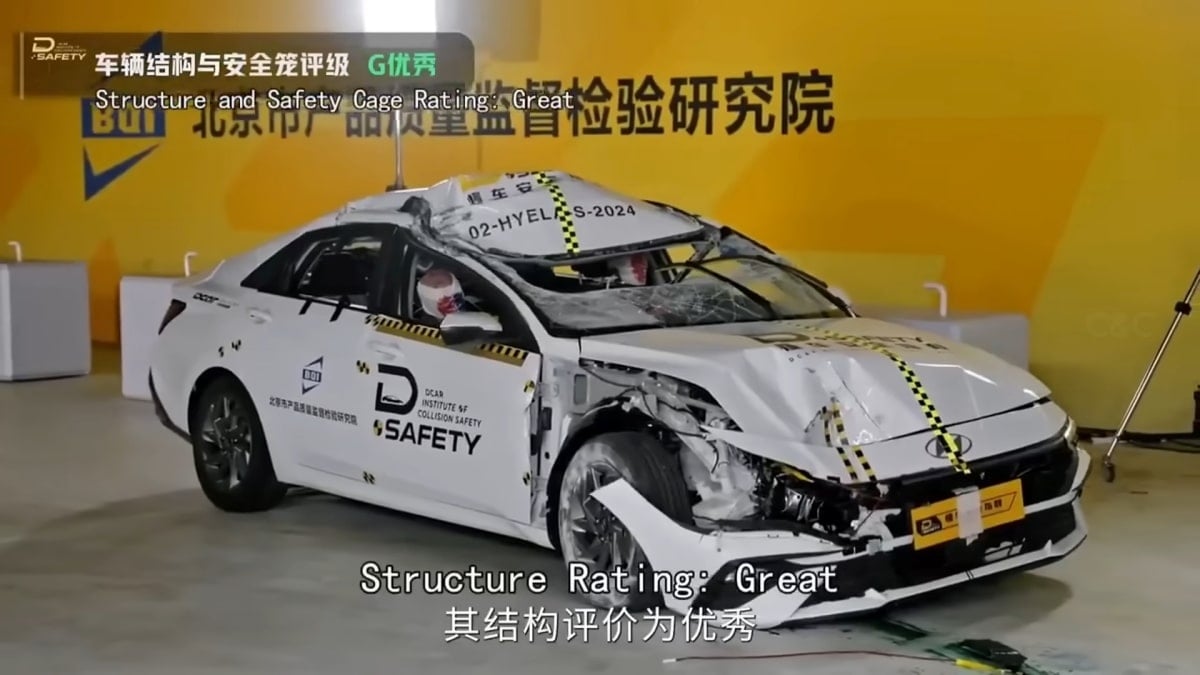
Tesla Model 3 and Hyundai Elantra were the two sedans that showed impressive results. The Tesla's lower silhouette and sleeker design may have aided it here. For comparison, the Model 3 is almost 4.0 inches lower than the Maybach. The American-made EV showed very little deformation in the A-pillar, meaning even the front passenger can walk away without serious injury. Moreover, Tesla's airbags are designed to deploy in a way that cocoons the entire driver's cabin. Despite recent recalls for the Tesla Model 3 and Model Y, the sedan EV by Tesla is now popular for more than its performance-per-dollar ratio.
The Hyundai Elantra is the real surprise here. Its front bumper absorbs a good amount of the initial impact, leading to the roof area and A-pillar deforming at an acceptable level. No major injuries are perceived for the driver and front passenger.
The main takeaway.
SUVs are not necessarily safer than sedans or other light passenger cars. Yes, in a collision, the heavier car usually has the advantage. That said, a larger, but old vehicle can prove less safe than a smaller, but newer vehicle. For example, crumple zones were largely an unexplored concept in the 1970s, although Mercedes introduced the idea in 1952, with the 220 model.
There are plenty of variables at play. SUVs are more likely to crash too, as they typically have worse handling due to the higher center of gravity. This is especially true for the more traditional, body-on-frame platforms.
Note that these crash tests have been performed at a speed of 56 km/h (approx. 35 mph). Any higher and the probability of survival is greatly reduced. This is one of the hardest crash tests for a car to pass, so don't crash.
Dimitar Angelov's automotive interests made him an expert in a wide variety of vehicles. Japanese brands like Toyota are closest to his heart, although performance cars in general are his favorite segment, which is why he is constantly on the lookout for the best deals on the market. Dimitar Angelov's car passion and knack for the written word led him to complete a Master of Arts in Media and Communications, and classic car restoration. Dim is happy to get behind the wheel of any car and share his impressions. You can follow Dimitar on X, Linked-in, Instagram, and Facebook.
Image source: C&C/ YouTube (Video included in the article)



